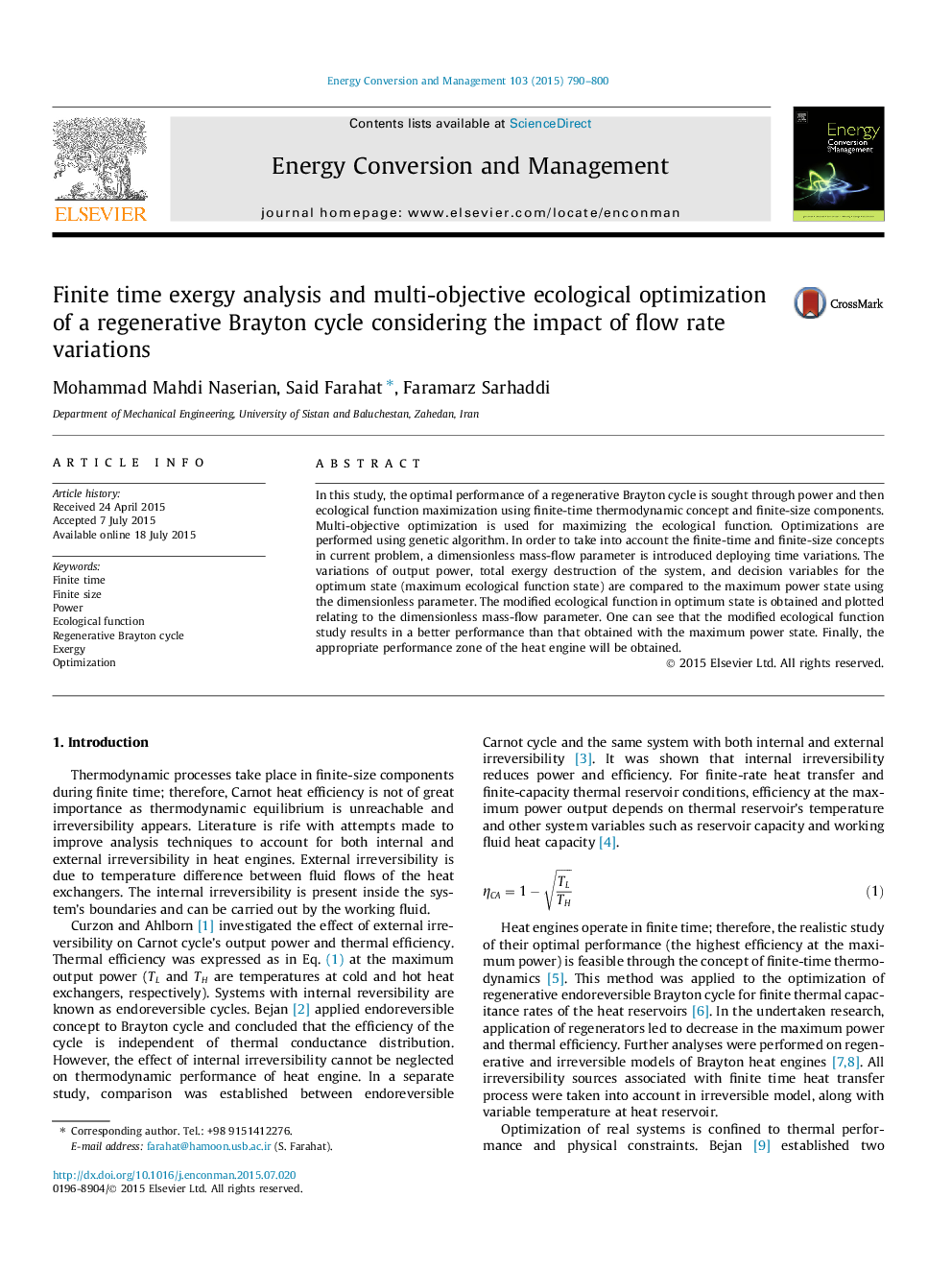| Article ID | Journal | Published Year | Pages | File Type |
|---|---|---|---|---|
| 771685 | Energy Conversion and Management | 2015 | 11 Pages |
•Defining a dimensionless parameter includes the finite-time and size concepts.•Inserting the concept of exergy of fluid streams into finite-time thermodynamics.•Defining, drawing and modifying of maximum ecological function curve.•Suggesting the appropriate performance zone, according to maximum ecological curve.
In this study, the optimal performance of a regenerative Brayton cycle is sought through power and then ecological function maximization using finite-time thermodynamic concept and finite-size components. Multi-objective optimization is used for maximizing the ecological function. Optimizations are performed using genetic algorithm. In order to take into account the finite-time and finite-size concepts in current problem, a dimensionless mass-flow parameter is introduced deploying time variations. The variations of output power, total exergy destruction of the system, and decision variables for the optimum state (maximum ecological function state) are compared to the maximum power state using the dimensionless parameter. The modified ecological function in optimum state is obtained and plotted relating to the dimensionless mass-flow parameter. One can see that the modified ecological function study results in a better performance than that obtained with the maximum power state. Finally, the appropriate performance zone of the heat engine will be obtained.
